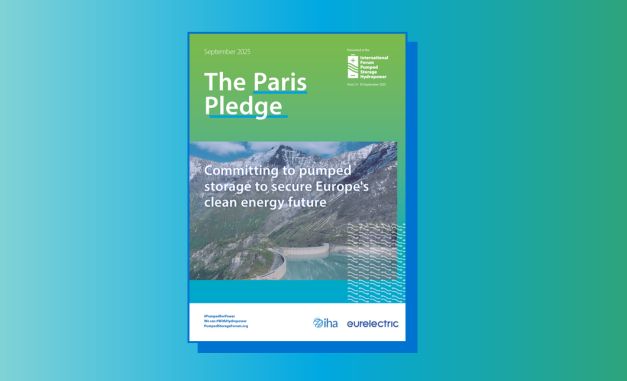The First Global Stocktake International Hydropower Association Submission


The International Hydropower Association (IHA) respectfully submits the following text to the First Global Stocktake process of the UNFCCC.
The Key Messages we bring to Parties’ attention are as follows:
1. Hydropower needs to double by 2050 if we are to meet climate goals
To keep global warming to below 1.5°C, at least 2,500 GW of hydropower capacity is needed, according to modelling done by the International Energy Agency and the International Renewable Energy Agency. This is around twice today’s installed capacity.
Today, hydropower is the largest source of low carbon electricity, and third largest overall, providing more than 15% of the world’s electricity. Through the flexibility and storage services it provides, hydropower plays a key role integrating and accelerating growth in variable renewables such as solar and wind, as well as strengthening overall system resilience. Indeed, according to the IEA and IRENA models, by 2050 hydropower will be the single largest source of flexible electricity generation. Therefore, if we want the most from wind and solar, we need to also increase hydropower.
2. The world is not on track to meet this goal
Hydropower is not developing fast enough to meet these global targets. There needs to be a step change in the amount of global installed capacity of sustainable hydropower by 2050 in order to support the clean energy transition away from fossil fuels and to tackle climate change.
Hydropower should be growing at an average pace of around 46 GW per year, the equivalent of the combined capacity of Norway and Mexico. The current rate of development is well below these levels. Between 2016 and 2021, hydropower grew at an average rate of 22 GW/year, half the required rate and well below the record 47GW commission in 2012. In 2022, 30 GW were added to the mix which is a slight improvement over the previous five years, but still well below what is required.
3. Going forward, the only acceptable hydropower is sustainable hydropower
There is no excuse for unsustainable hydropower projects to go ahead. Hydropower developers and operators should demonstrate their commitment to sustainable hydropower in a way that is clear, transparent and verifiable. The preparation, implementation and operation of hydropower should be delivered in accordance with international good practice as defined by the Hydropower Sustainability Standard.
4. What needs to change for the world to be on track?
Policy recommendations from the IHA:
- Plan for a low carbon future now. Hydropower takes 10-15 years to develop. This includes assessing storage and flexibility needs for the future grid, identifying potential sites and undertaking feasibility studies.
- Establish financial mechanisms that reward flexibility and stability and give investors predictability. Subsidies, grants and capacity markets are some of the mechanisms able to achieve this.
- Streamline license and permitting processes. Currently, too many projects are unable to progress due to extensive delays, which slows down the deployment of essential infrastructure that is vital for tackling climate change.
- Embed the Hydropower Sustainability Standard into processes and regulations.
- Incorporate climate resilience into the planning and operation of hydropower projects by using the IHA’s Climate Resilience Guide.
- Make the most of existing infrastructure. Facilitate modernisation and retrofitting of ageing hydropower plants and incorporate increases in generation capacity through refurbishment projects. Fitting turbines to non-powered dams or adding floating solar to existing reservoirs are other methods of using existing infrastructure, offering low impact added capacity.
Read the rest of the submission by downloading it from the link above.











